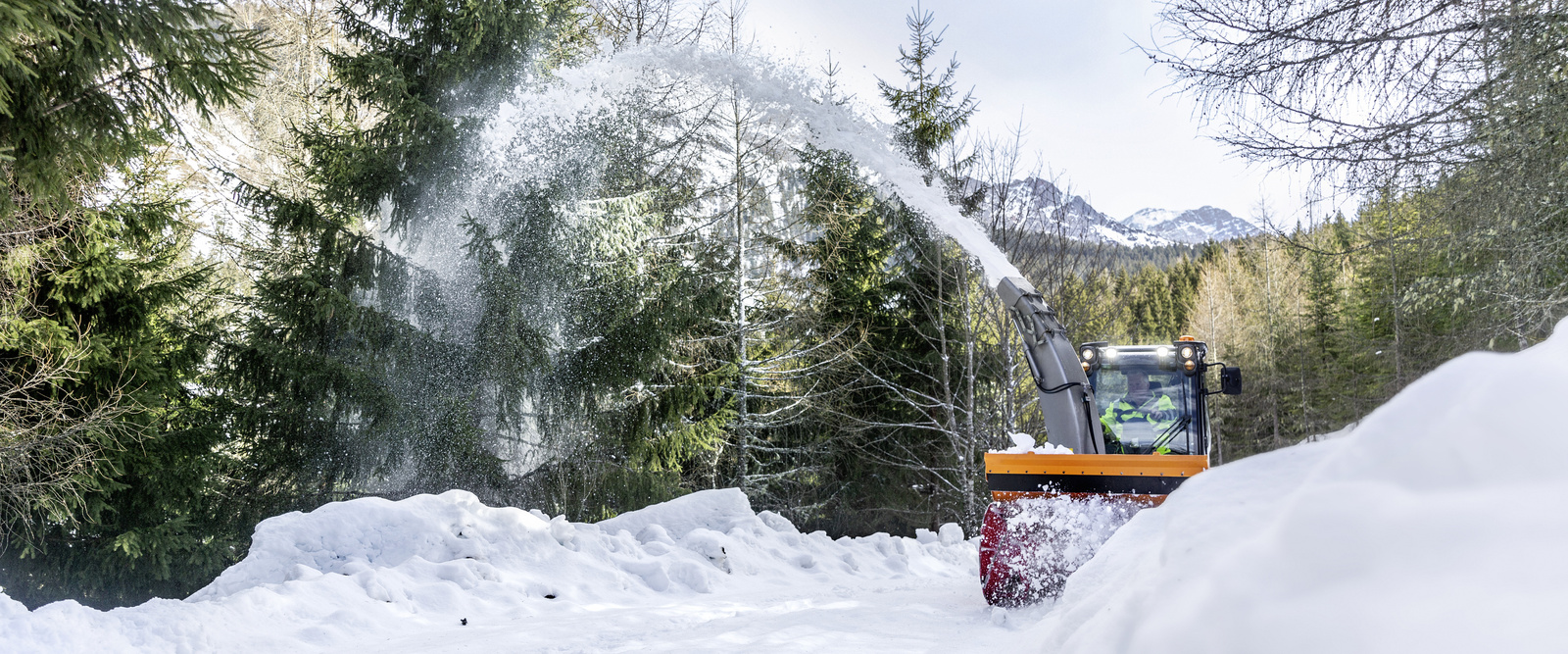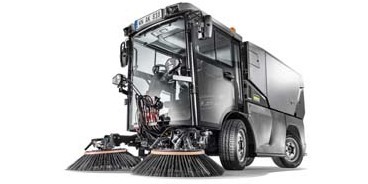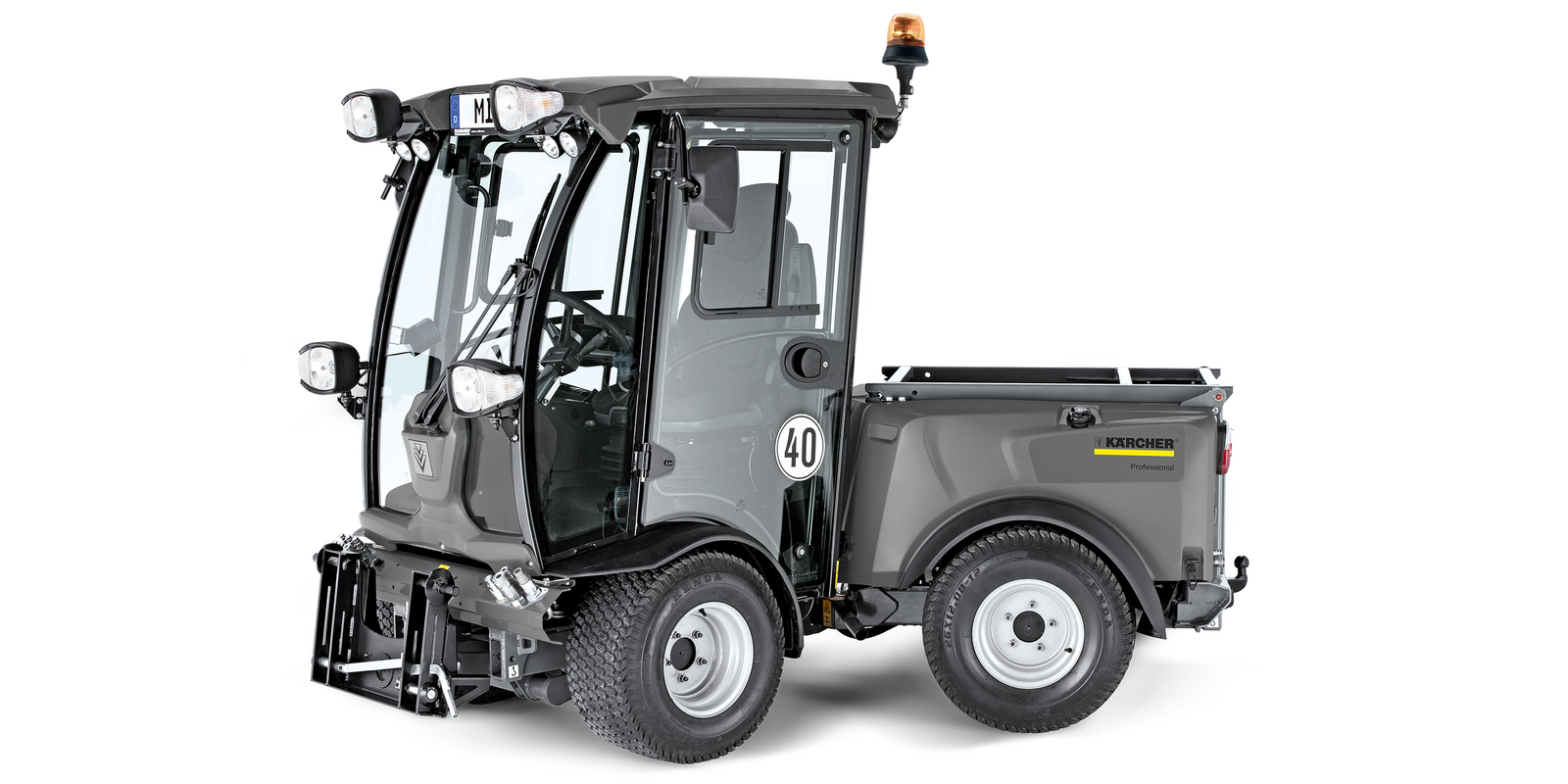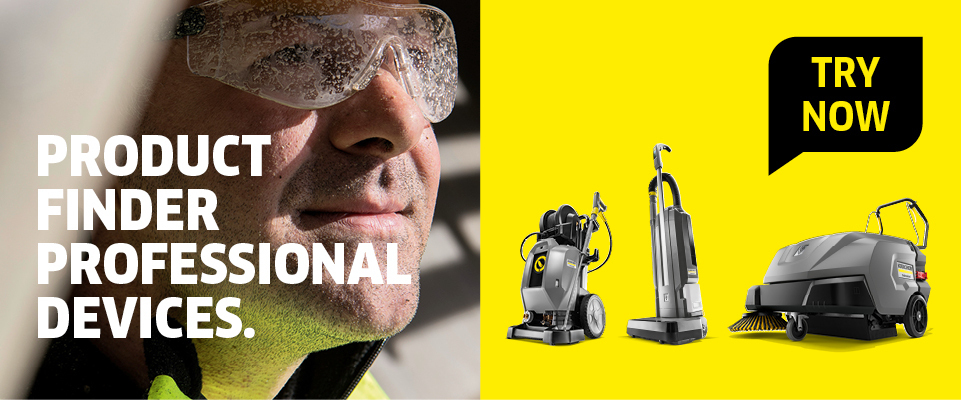Winter services
Climate change and the transport revolution present winter service teams with immense challenges, including environmental impacts such as reduced snowfall, the sudden onset of winter weather or black ice. At the same time, cycle path networks are being massively expanded, as more and more road users switch to two wheels for the sake of the environment or to counter rising fuel costs. What methods are available for local authorities, municipal maintenance depots, external service providers and building service contractors to keep working ecologically, economically and ergonomically? Which implement carriers and implements are used for which jobs?

Ready for winter
Winter services are also seeing the effects of climate change and need to keep up with the revolution in transport. In order to keep up with the changing nature of tasks, it is important to keep operational schedules flexible.

When the winter weather goes off-piste: needs-based clearance
Winter services are having to be rethought in response to climate change: moving away from rigid operational schedules and towards more flexibility in order to react to the sudden arrival of wintry weather. To be able to keep working economically in these conditions, clever planning is required and task forces need to be organised. Needs-based clearance is the most effective strategy for this, and modern technologies can help here.
Clearing cycle paths: don't take any risks
However, it is not only climate change but also the revolution in transport that is posing new challenges for local authorities. More and more road users are switching from four wheels to two for the sake of the environment or for cost reasons. This change in trend means that the cycle network in Germany, for example, keeps expanding. In 2020, the country had just under 7,000 kilometres of cycle paths. Today, that figure has already grown to 12,000 kilometres. According to legal requirements, there is currently no obligation to clear cycle paths. Nevertheless, it is still advisable that local authorities and municipal maintenance depot clear and grit cycle paths in order to prevent accidents.
Tip 1 – Stay one step ahead with temperature sensors:
Temperature sensors in the asphalt can help to foresee impending snowfall or sudden icy conditions and therefore plan operations in line with actual requirements.
Tip 2 – Prioritisation in the event of black ice:
In the event of black ice or heavy frost, particularly vulnerable spots such as depressions or bridge underpasses should be prioritised in order to minimise the risk of accidents.
Choosing the right machines and equipment
In order to work efficiently and economically, spreaders and spreading materials should be selected to suit the application. Narrow-track vehicle, articulated steering, add-on and trailed roller spreaders, ice-melting or blunting spreading materials – an overview.

The right implement carrier: narrow-track vehicle or articulated steering
The following generally applies to implement carriers: good visibility in the cab and suitable lighting are key to road safety. LED light is only suitable to a limited extent in winter as it is highly reflective. The cabin should also be well air-conditioned so that the windscreen and windows do not mist up. A heated footwell creates a pleasant working environment for the operator, especially on longer rounds. Ergonomically designed implement carriers not only ensure road safety, but also make work less arduous for operators. Narrow-track vehicles are particularly well suited for winter services in city centres that have an extensive network of footpaths and cycle paths. Because these can spread over a narrow space and a wide space, they can be used for narrow footpaths or cycle paths as well as for large market squares or car parks. Implement carriers with articulated steering are agile and easy to manoeuvre as the implement has directional stability as it follows the towing vehicle. The carrier vehicle and implements must be designed to work together. As a general rule, implement carriers for winter services should have permanent all-wheel drive. The appropriate implement must be selected to suit the application.
Add-on and trailed roller spreaders and more besides: what matters when choosing implements
When it comes to the gritter, there are also more general considerations to factor in. For example, only corrosion-resistant machines with plastic components or steel constructions with an appropriate paint finish and corrosion protection should be chosen. For economic and environmental reasons, a uniform spreading density and a variable dosing quality – adapted to the weather and slippery conditions – are also very important. To ensure there is no need to reload on longer operations or when using the maximum spreading density, the machine must have sufficient loading capacity.
Add-on and trailed roller spreaders are compact and therefore suitable for narrow footpaths or cycle paths. Problematic spreading materials are spread safely and are not propelled outwards. What's more, these offer a reloading option from the vehicle's loading platform. The fixed spreading width facilitates even longer operations. Spreaders with spreader discs can be used both on narrow pavements and large town squares, since their variable spreading width ranges from approx. 70 cm to 6 metres. Top-mounted spreaders have a compact design and offer a large hopper volume, a high level of operator convenience and precise dosing. However, it must be noted that these require longer set-up times and are costly to purchase.
Ice-melting or blunting gritting agents: the spreading material depends on the objective
It is important to choose the right spreading material to suit the terrain and the weather conditions. There are thawing products with a surface-adhering effect, which melt ice into water. The residual salt then stays on the surface in a dry state, and prevents the surface from freezing over again. There are also blunting agents (e.g. grit, crushed sand or granules). These are pressed into the blanket of snow and increase friction resistance, but do not have a lasting effect. Another variant is pre-wetted salt spreaders, which are fitted with brine tanks in addition to the dry material hopper. Dry salt and brine are mixed on a spreading plate and the salt grains surrounded by brine are then spread evenly at different spreading widths, spreading densities and driving speeds. The right implement carrier must be paired with the right implement, which varies depending on the type of grit chosen.
Tip 1 – Preventive spreading with brine:
In large municipalities, there is an increasing shift towards preventive spreading with brine: this is applied the day before icy conditions or snowfall are forecast so the ground can be thawed in advance with brine. This makes clearing the following day easier, making it manageable even for smaller teams.
Tip 2 – Use snow chains:
In extreme conditions, snow chains are required on the carrier vehicle to increase its traction on the road.
Snow-clearing methods
When snow needs to be cleared, winter services have various methods and machines at their disposal, depending on the objective, the amount of snow and the terrain.
Partial or total clearance: which method for what?
There are two possible methods when it comes to clearing snow: with partial clearance, the fresh snow is pushed to one side and the snow remaining on the carriageway is compacted. A spreading material, such as grit, is then applied to the compacted surface. This method is used, for example, on hiking trails in tourist areas. With total snow removal, however, the carriageway is completely cleared of snow and ice, right down to the tarmac. This method is used for motorways or cycle paths, for example.

Total clearance is used when there is less snowfall: front sweeper with snow roller brush
If the road needs to be completely free of snow and ice, a front sweeper with snow roller brushes has some key advantages: the flexible clearing elements adapt to uneven road surfaces to produce excellent results. What's more, around 40 percent less grit is consumed, which protects the plants growing on the roadside. However, the machine takes longer than a plough to clear the snow. These machines must also be used at an early stage, because compacted snow cannot be dissolved and they can also only be used up to a certain depth of snow.

Large volumes of snow and compacted snow: no match for the snowplough
A snowplough pushes even deep snow off the road quickly and efficiently. Even compacted snow is cleared at a high clearing speed. The drawback of ploughing snow is that the snow that is pushed to the side gets heavily compacted, and therefore takes longer to melt.
Tip 1:
If the scraper blade of the plough is too hard, it can damage the road surface.
Tip 2:
If there is very little snow, sweeping the snow with a free-rolling sweeper is completely sufficient.
Removing large amounts of snow
During periods of severe winter weather on high ground, a snow thrower is needed if the snow becomes too deep for the height of the snow plough blade. If the snowfall is too long and too heavy, some of the cleared snow must be removed from the edge of the carriageway so as not to obstruct traffic.

In heavy snowfall: snow throwers to combat extreme amounts of snow
A snow thrower can handle even extreme amounts of snow. This is because rotating tools collect the snow, accelerate and then eject the snow in a targeted manner. The working speed is between 0.5 and 4 kilometres per hour with a throwing range of up to 40 metres. The thrower is powered by the vehicle's engine. The PTO shaft is the central mechanical element within this process. This is driven by the engine and is designed to transfer as much power as possible to the implement.
Removing snow by the truckload: say goodbye to snow without night shifts and traffic chaos
On busy roads, especially in the mountains, the cleared snow needs to be removed from the edge of the carriageway after heavy snowfalls. If this is to be done in daylight hours with flowing traffic, the only way to achieve it is with a narrow implement carrier in conjunction with a truck. In this process, the implement carrier drives behind the truck and throws the snow onto the truck bed. There is no need to manoeuvre and cars can overtake with care. By contrast, loading snow with wheel loaders is not recommended because manoeuvring hinders traffic – meaning the work has to be completed at night.
Tip 1 – Suitable implement carriers:
A range of implement carriers for snow throwers are available on the market. The range includes models from 26 hp for smaller operations, for example at hotels, industrial buildings or office blocks in city centres, up to 130 hp for heavy-duty winter operations.
Tip 2 – Load-dependent propulsion:
Implement carriers with load-dependent forward drive reduce the strain on the driver particularly effectively. They adapt their driving speed to the amount and condition of the snow. The speed is automatically reduced when the snow is compacted and heavy, and increased when the snow is light because the thrower requires less power.
Thinking cleverly about winter services: the only way to the overcome the challenges
To ensure that operations can take place during the day if possible and to reduce staff workloads, it is important to choose the right vehicle and consider the ergonomic aspects. With the appropriate equipment, smart operational planning, and the right method, local authorities, municipal maintenance depots or external service providers can achieve their goals economically whilst ensuring safety on the roads and employee satisfaction.
Suitable products for your area of application
Find a wide range of technology at lightning speed – with the Kärcher Professional product finder
In no time at all, we'll show you the exact Kärcher Professional machine that best suits your specific cleaning task.








